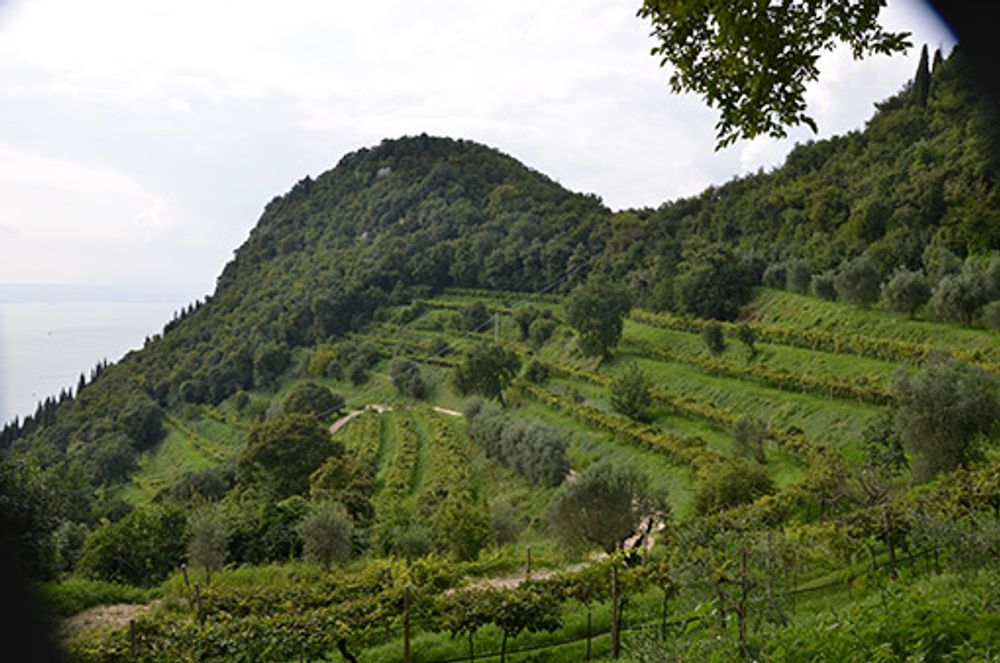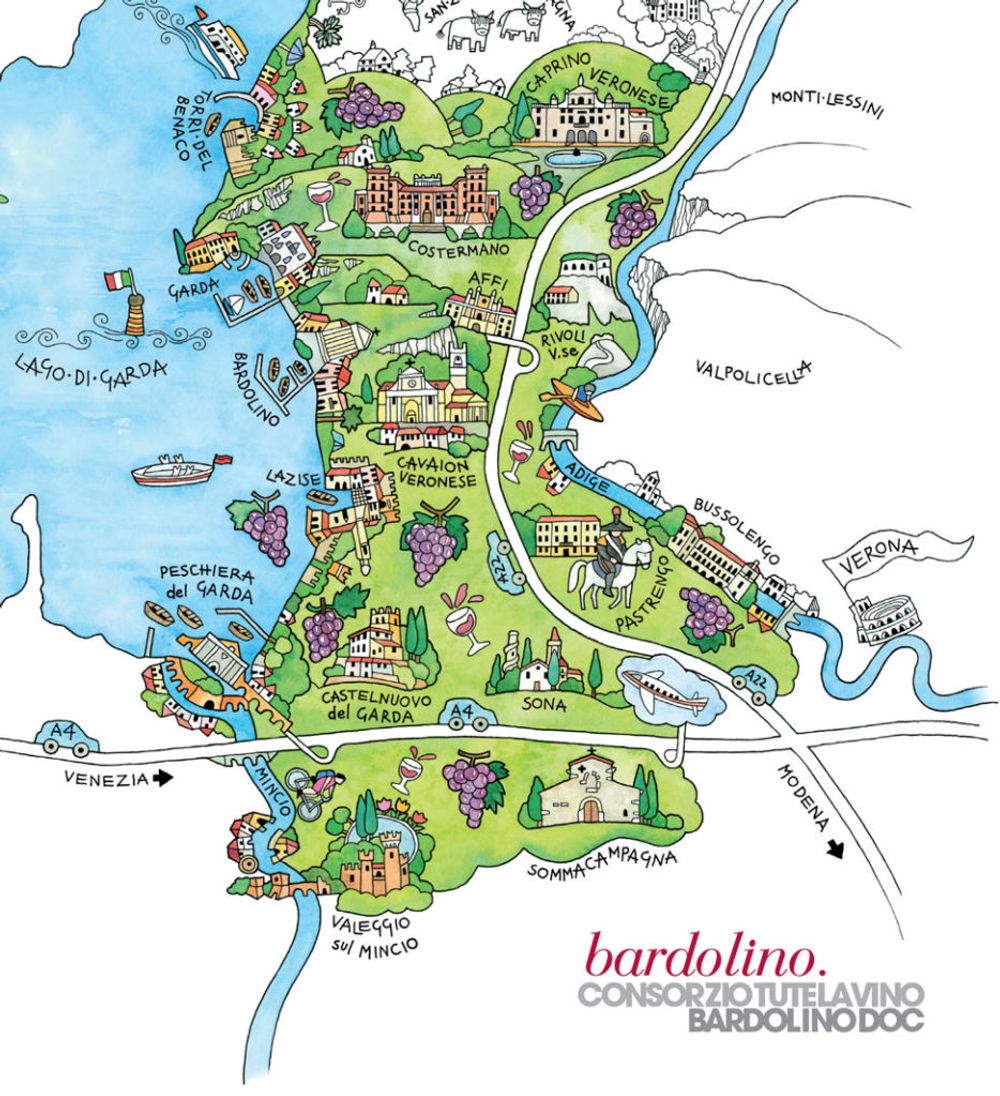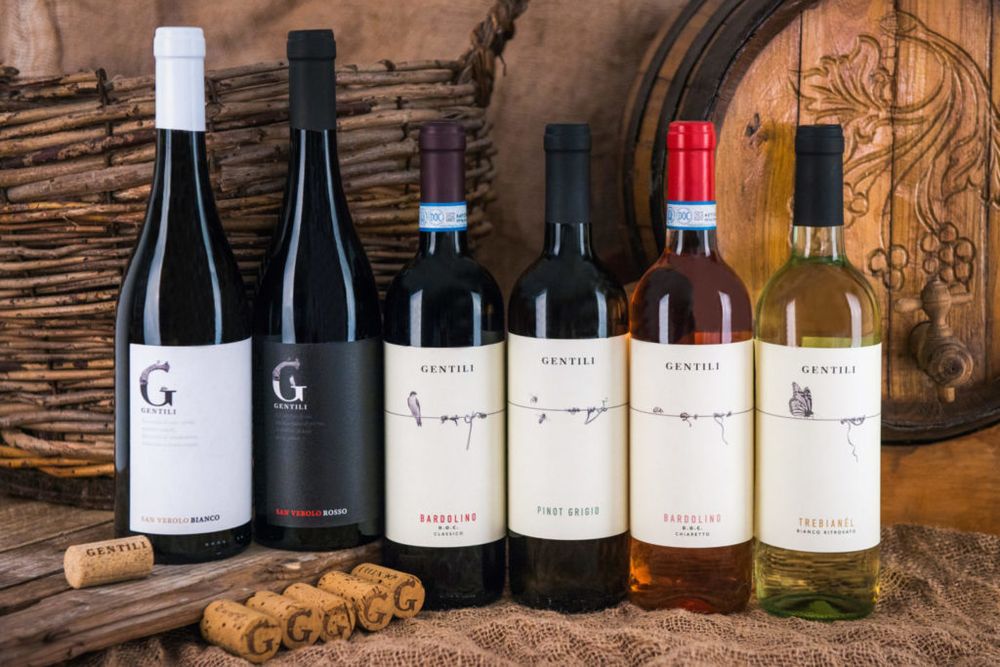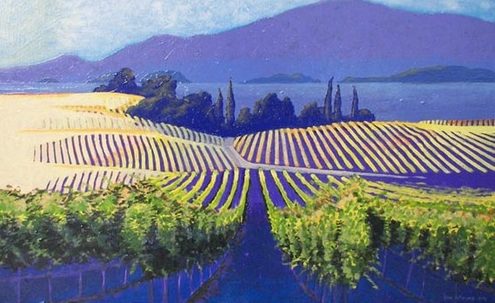“We believe we can achieve more and more in [future] years, because we believe in this new style of drinking wine – simpler, and more natural, more directly connected with the terroir,” says winemaker Enrico Gentili.
With a market reeling from tariff tiffs, many worry in the US how to fill the void for French, Spanish, German and English wines.
One answer resides on the shores of Lake Garda, in northern Italy. Here, Bardolino and Chiaretto wines offer quality, versatility, and value – easily on par with Bourgogne rouge and Provencal rosé.
Hiding in plain sight
Bardolino and Chiaretto have been hiding in plain sight for a while. Once a Roman outpost, these wine regions rank among the first to receive Italy’s DOC (Denominazione di Origine) appellation status in the late 1960s due to their heritage and quality.

Vineyard near the village of Cavan. The red grapes planted are Corvina, Rondinella, Sangiovese, Merlot and Molinara. The white grapes planted are Garganega, Marcobona, Cortese and Moscato Bianco.
Carved from glaciers millions of years ago, Lake Garda’s mineral-rich morainic soils impart a distinctive saline character to area wines. Italy’s largest lake also enjoys a mild, Mediterranean climate, thanks to local winds that scud across it daily. Olives and citrus thrive here. So do wine grapes, many unique to the area.
“We have completely different varieties,” says Enrico Gentili, second-generation winemaker at Cantina Gentili in Caprino. “Especially Corvina, Corvinone, and Molinara. We are the only region here in Italy that cultivate these indigenous varieties.”

Due to the area’s unusual soils, climate and varieties, Bardolino and Chiaretto employ the pergola trellis system, an overhead training system that allows for greater air movement. “In this way, we can produce a unique wine,” says Gentili, who farms organically. “Not a concentrated wine, not a strong wine, but we have a lot of elegance in our wines.”
Elegance at affordable prices. Bardolino and Chiaretto wines average $16 – $25 USD (£12 – £19 GBP). “The prices are much more competitive, and gaining a bigger reputation,” says winemaker Matilde Poggi of Le Fraghe in Cavaion, another organic producer in Verona active since 1984, who started exporting her wines ten years ago.
Chiaretto Pink
This rise in reputation stems from the region’s recent return to its roots. In 2014, disillusioned with the deeply tannic, darker-colored Provençal saignée-style rosé then in vogue, the Consorzio di Tutela Chiaretto e Bardolino re-introduced Lake Garda’s ancestral version of rosé, a pale pink wine they dubbed “Chiaretto Pink.” (The name “Chiaretto” comes from the Italian word “chiaro,” meaning “light in colour”). Unlike Provencal rosés, Chiaretto uses autochthonic grapes, predominately Corvina, and eschews saignée, additives or pressing.

“I believe that well-made Chiaretto, with its crisp, cherry-accented Corvina base, stands up easily when compared to Provencal rosés, and often gives better value,” says Daniel Stewart, international sales & marketing director for Guerrieri Rizzardi, a noble winemaking family based in Bardolino since 1649. “The move in recent years to a lighter colour has given Chiaretto the ability to fit nicely into the world’s preferred pink colour profile, but still deliver a vibrant, often more intense palate experience.”
Bardolino Cru
The Consorzio also re-introduced Bardolino’s three historic red wine production zones in 2018. These sub-zones, originally outlined in the 19th century, include the northern foothills of Montebaldo, the upper morainic hills of La Rocca, and the lower, southern morainic hills of Sommacampagna. Each zone yields singular flavour profiles – Montebaldo favours strawberry and clove notes, La Rocca tends towards raspberry and cinnamon, while Sommacampagna proffers cherry and black pepper.
“I would say this that everyday, affordable Burgundy is not so easy to find anymore,” says Stewart, “So those who like a wine that has freshness, mild tannin, bright red fruit, and decent acidity, then Bardolino is a good choice.”
Back to the future

In addition to palate-pleasing, food-friendly pinks and light-bodied, age-worthy reds, look for more sparkling and white wines from Bardolino and Chiaretto, such as Enrico Gentili’s 2017 Chiaretto Spumante Metodo Classico Zero Dosage. Also more experimentation with single variety wines, such as Poggi’s Le Fraghe’s 2016 Chelidon from 100% Rondinella. “We are discovering a lot of possibilities, especially young winemakers like me and my friends, says Gentili, ”We believe we can achieve more and more in [future] years, because we believe in this new style of drinking wine – simpler, and more natural, more directly connected with the terroir.”
Ultimately, Bardolino and Chiaretto present some serious competition to other wine regions worldwide, plus a potential antidote to current trade troubles. “The combination between land, climate and varietals gives us an unrepeatable identity,” concludes Francesco Piona Cavalchina of century-old Cavalchina in Sommacompagna. “This is the real value of these wines, which present a profile that tunes the modern lifestyle, and are a perfect match for the light, but rich and flavourful foods that you find in this region.”
- Bardolino and Chiaretto wines average $16 – $25 USD (£12 – £19 GBP).
- Alcohol content averages between 12% and 13%.
- Bardolino and Chiaretto are made primarily from Corvina Veronese, and a smaller percentage of Rondinella, both red varieties native to Verona.
This feature was written before the Coronavirus crisis in Northern Italy









































